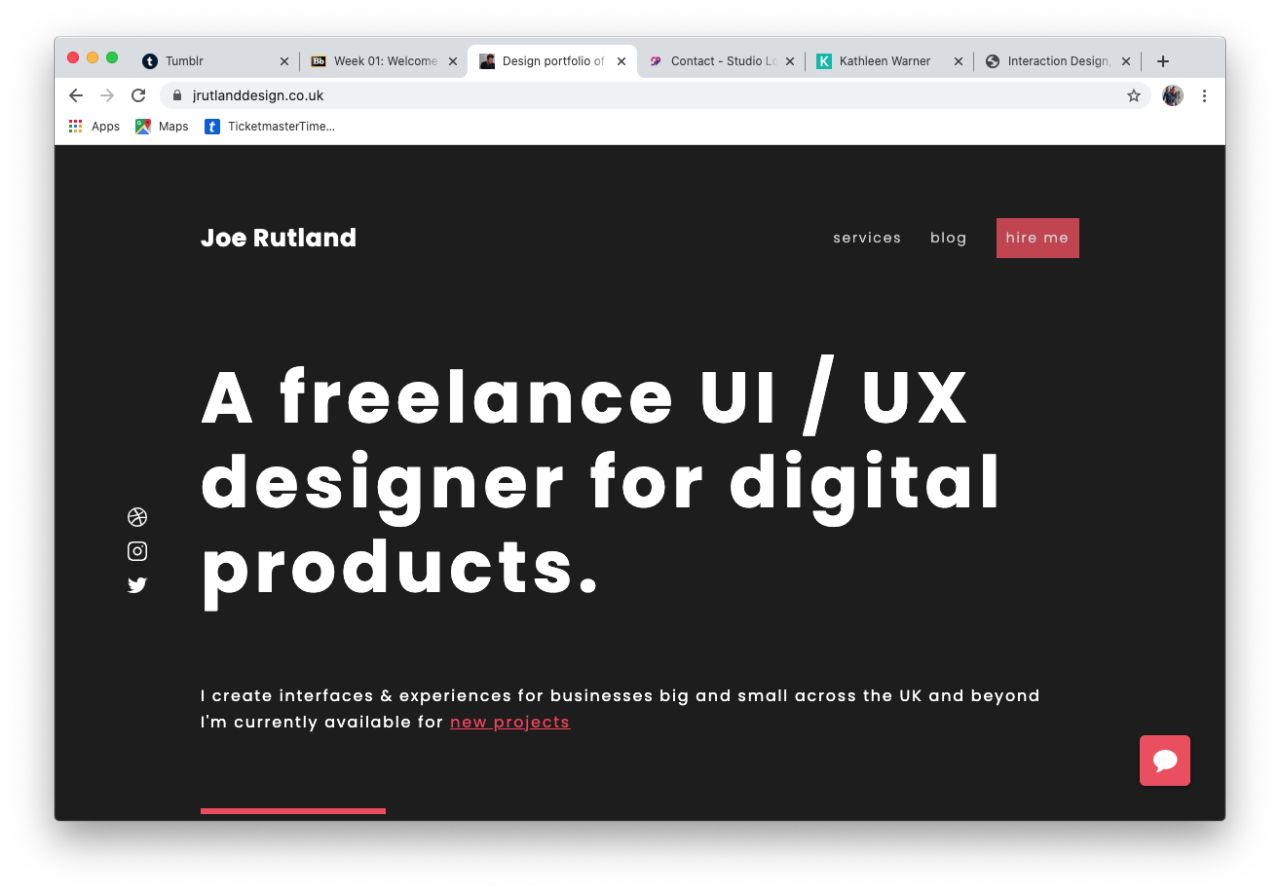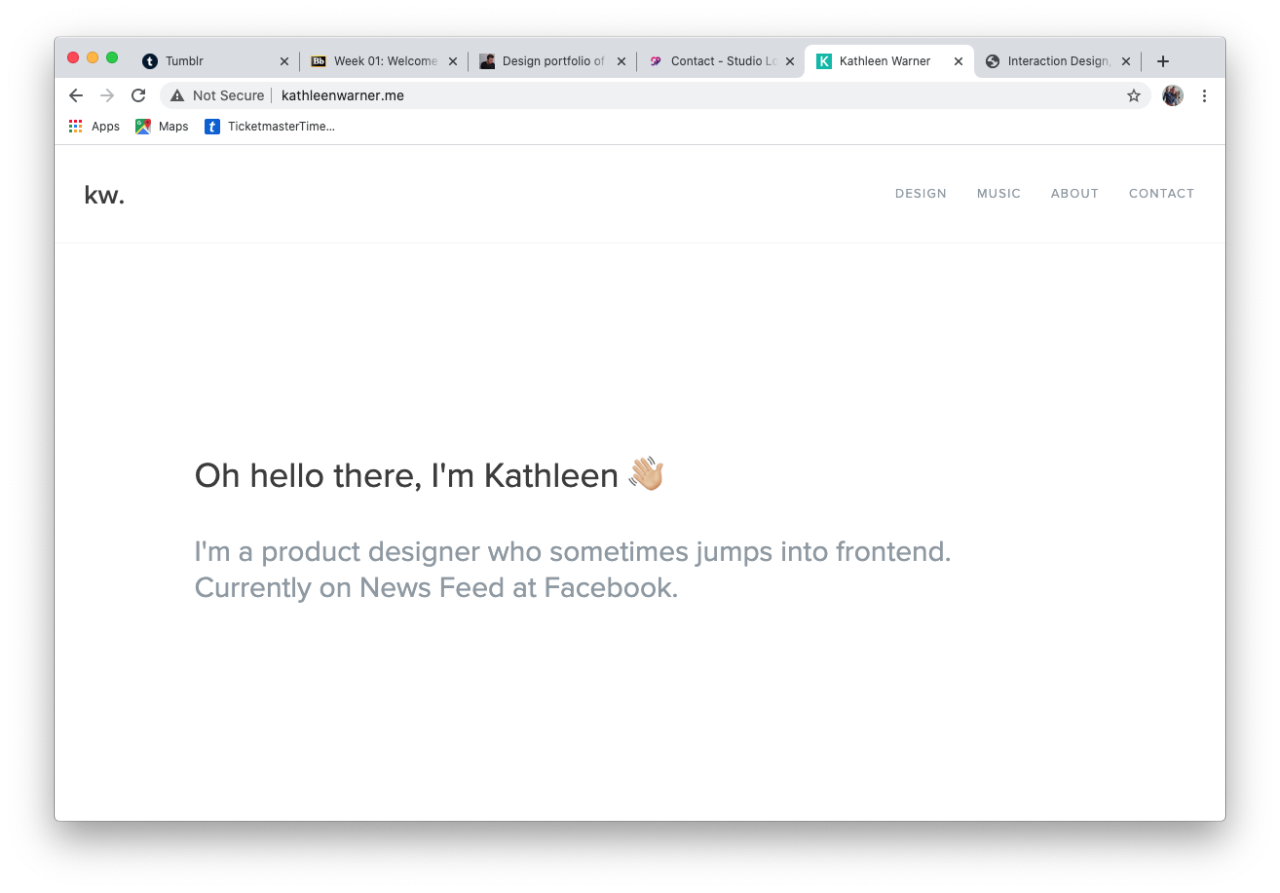
When writing my content for my website, I researched into other designers to see how they spoke about themselves and their work. This helped a lot, I was able to gain inspiration from phrases they used or original ways they titled areas of their website.

The introduction to Rutland’s website is professional, with the ability to instantly know what he does as a designer and his name. Also below that we are given a short introduction swiftly followed by a call to action to visit his recent projects. Instantly drawing the user down the page to see his work.
His biography section gives us a window into his personality as we are presented with a play on words as the title “ The man, The Myth, The Designer”, this is an original way to present the about section and would be a lot more appealing to visitors to the website than the standard “about me” title. The initial biography we are given is light hearted but not overly humorous, when we continue into the more about him section we see his true personality. He speaks a lot more casually about himself, his life and makes remarks toward the fact he isn’t a design nomad. It also contains links to his Instagram and Spotify, again him providing us with a window into his personality and life outside of design.
When we open a case study, the content is short and to the point, stating what he was presented with and what he went on to do, we are also given only a few images on the work. This method of presenting case studies lets the work speak for itself, personally I would like to explain the process more within my content but as an established designer Rutland can afford to let the work do the talking.
From Rutland I can learn how call to action links are important, he places them in every section drawing viewers to contact him or view his work. Also, the light hearted speech in the additional about me section has given me inspiration on how to write about myself in a professional manner while showing my personality.

The introduction to Warner’s website is friendly, with the use of a waving emoji and a casual use of speech “Oh hello there, I’m Kathleen 👋🏼”. This is a normal way to introduce yourself in person, so why not continue this across all forms of communication with the potential client. Her small biography section also is light hearted with her referencing occasionally working within frontend design as “jumping into it”.
The way Kathleen talks about herself and her work, makes her seem approachable and friendly, the use of emoji’s plays a great part in this as it breaks up the minimalistic designed website. She talks about her work in a similar way, using humour to set the scene of the problem in a realistic way. It seems like she is having a conversation with someone about her work, it is written very literally as if it’s exactly how she would say it.
When we open a case study, the content is separated using headings such as the problem, research, sketches and design - showing the design process from start to finish, all while presented in an easy to follow way for the user
From Kathleen I can learn how friendly, light hearted and humorous writing can pass across your personality. She does not write a lot, but what is written is smart content, enough to give the viewer the necessary information in a well presented fashion, while keeping it short enough so they don’t get bored.